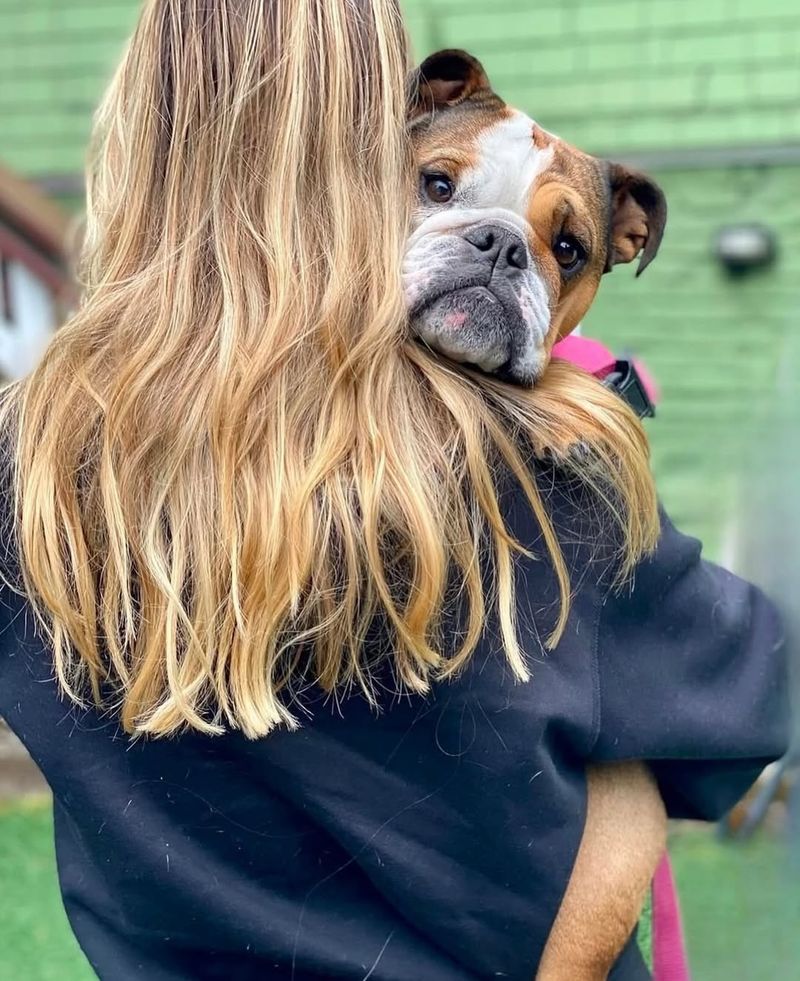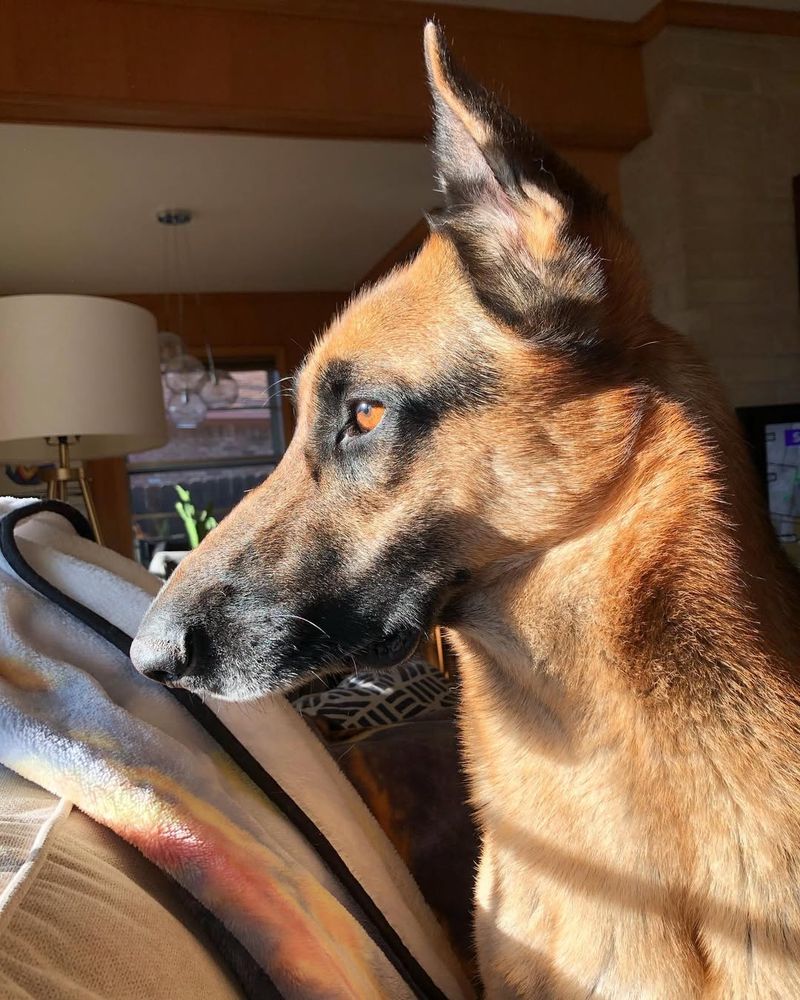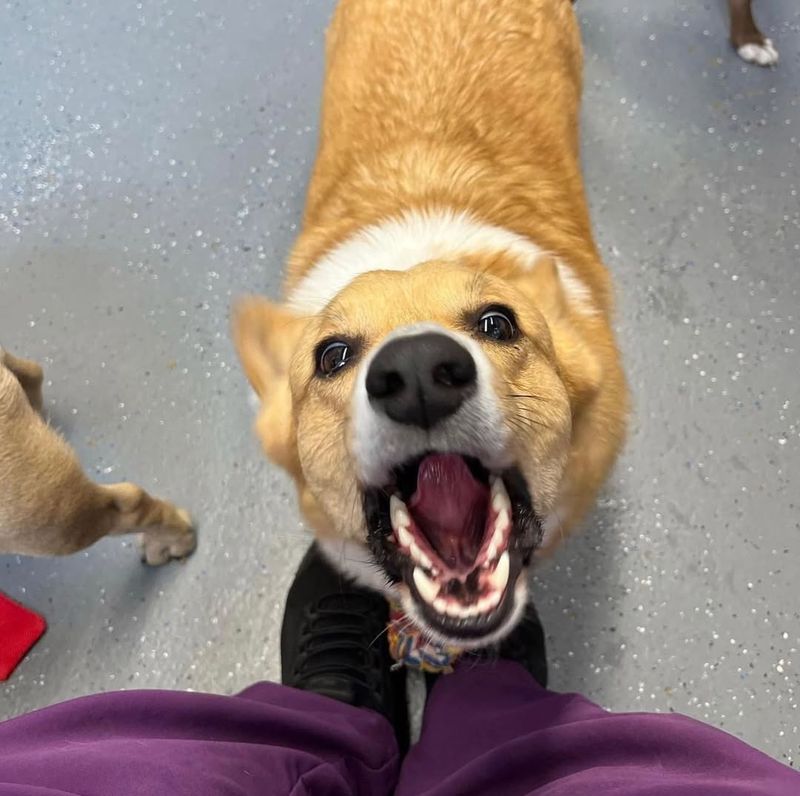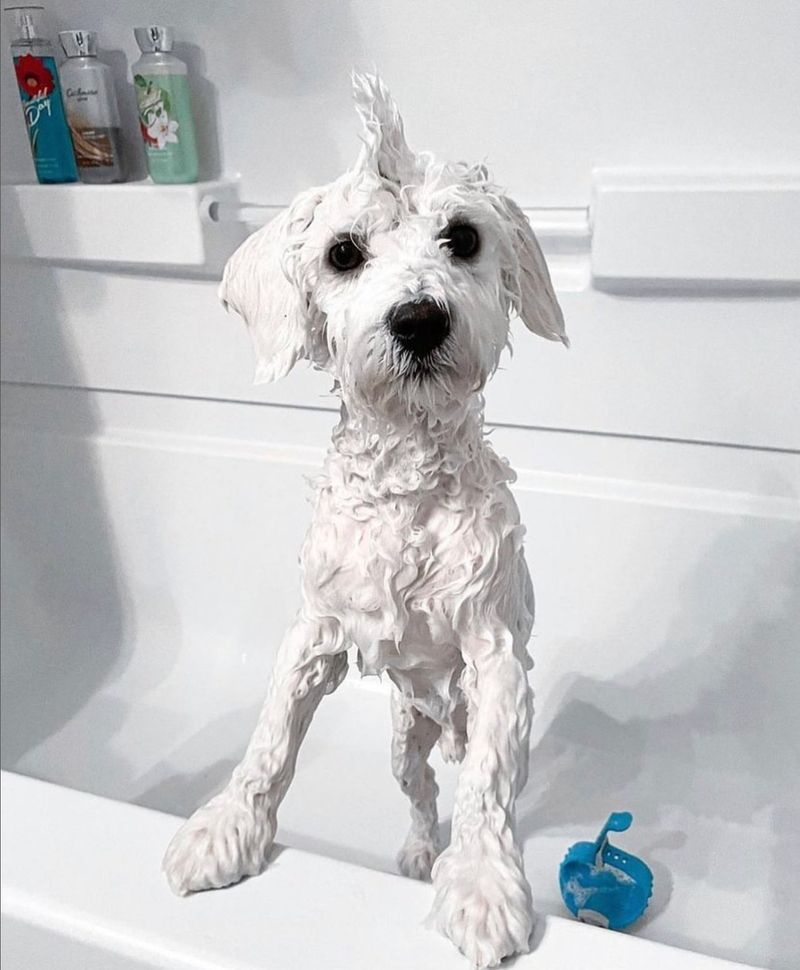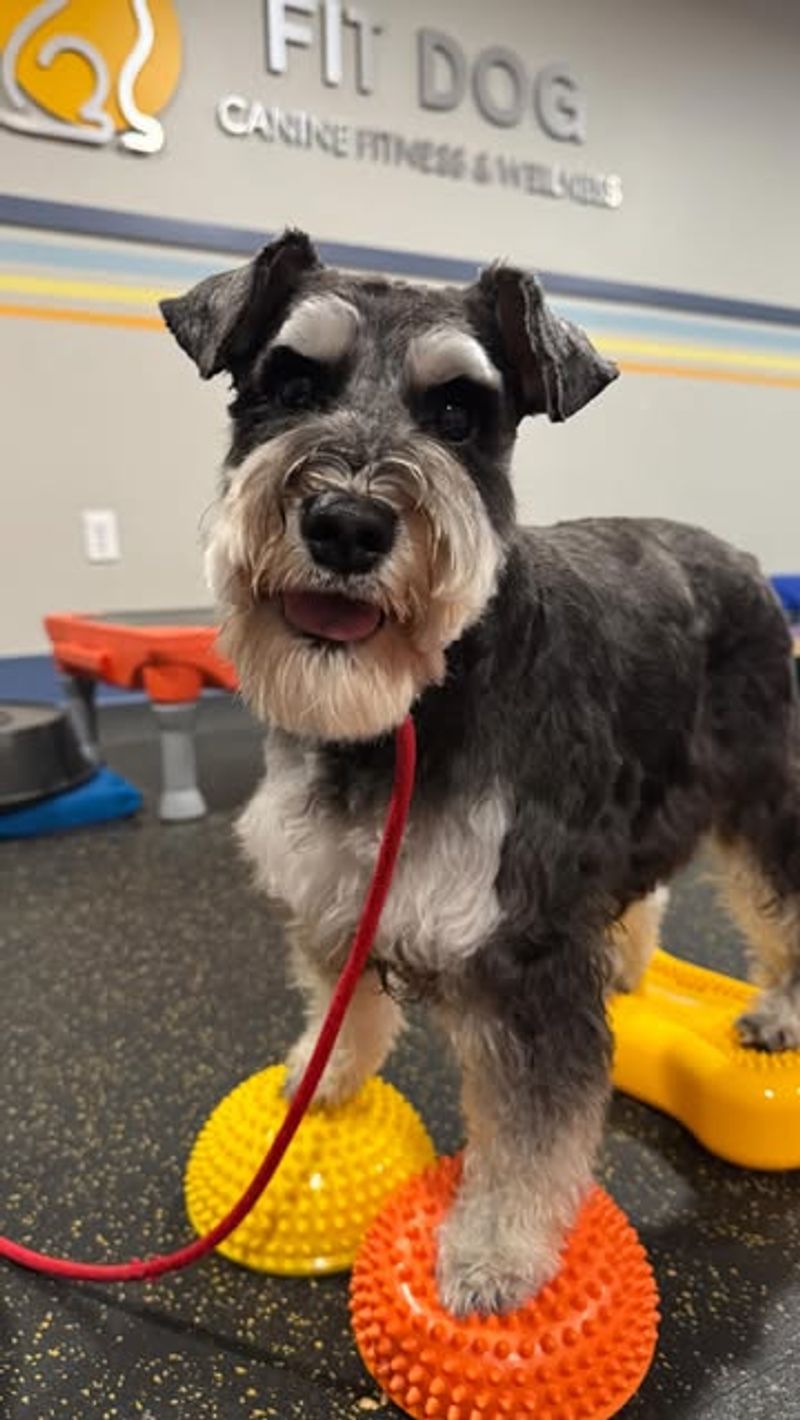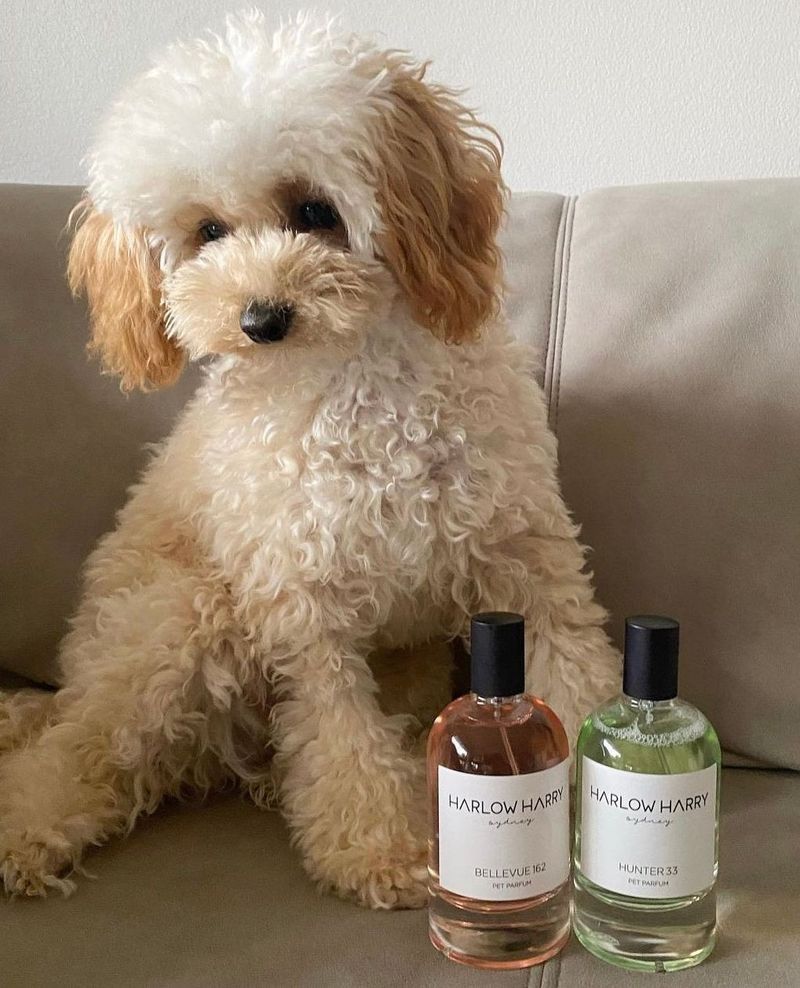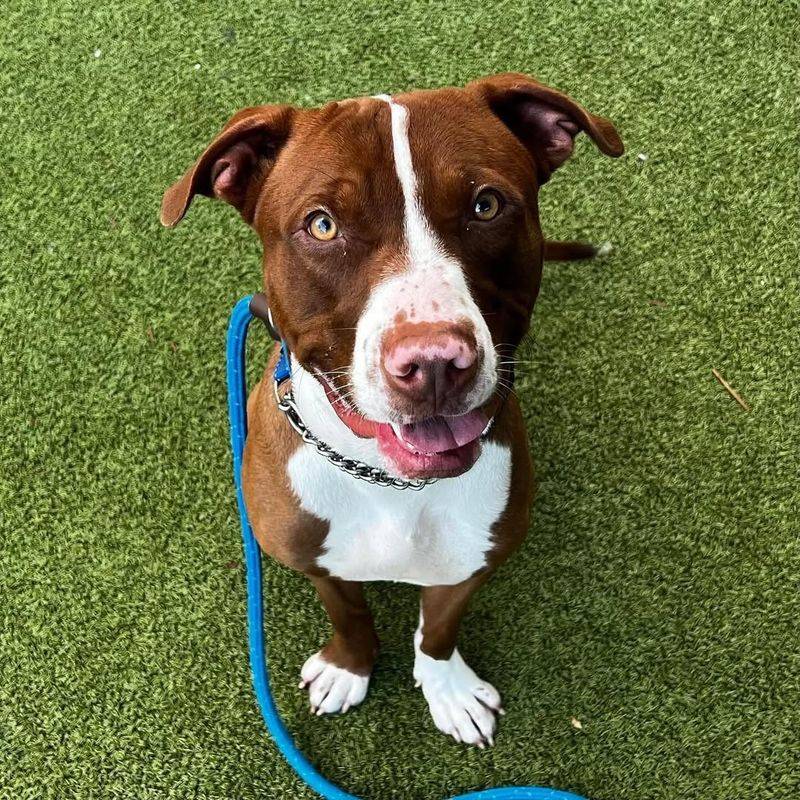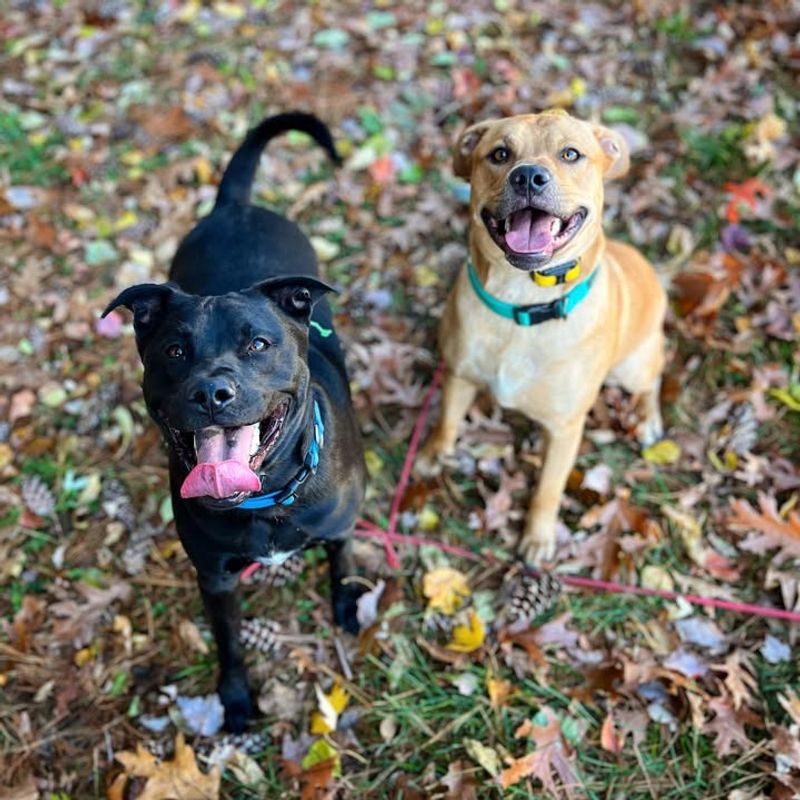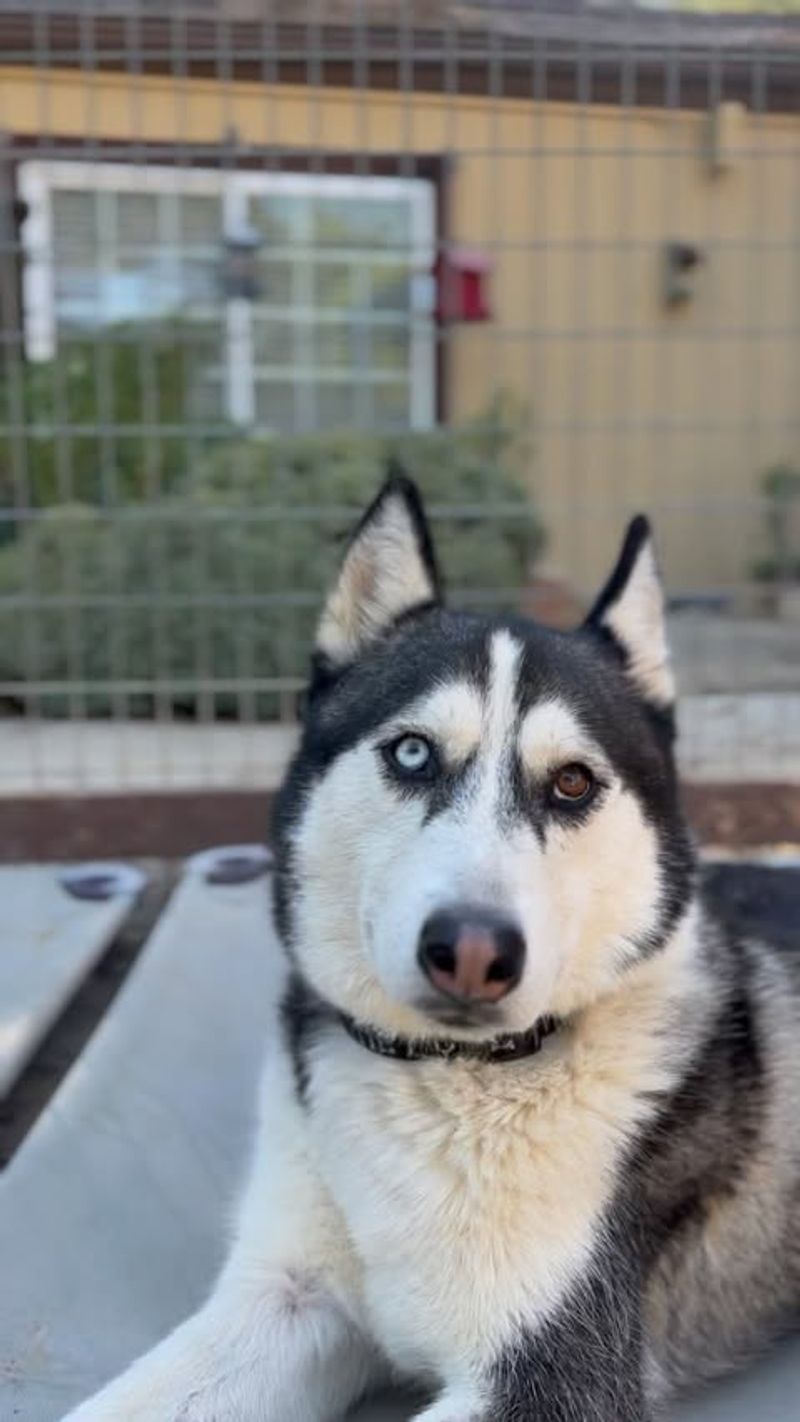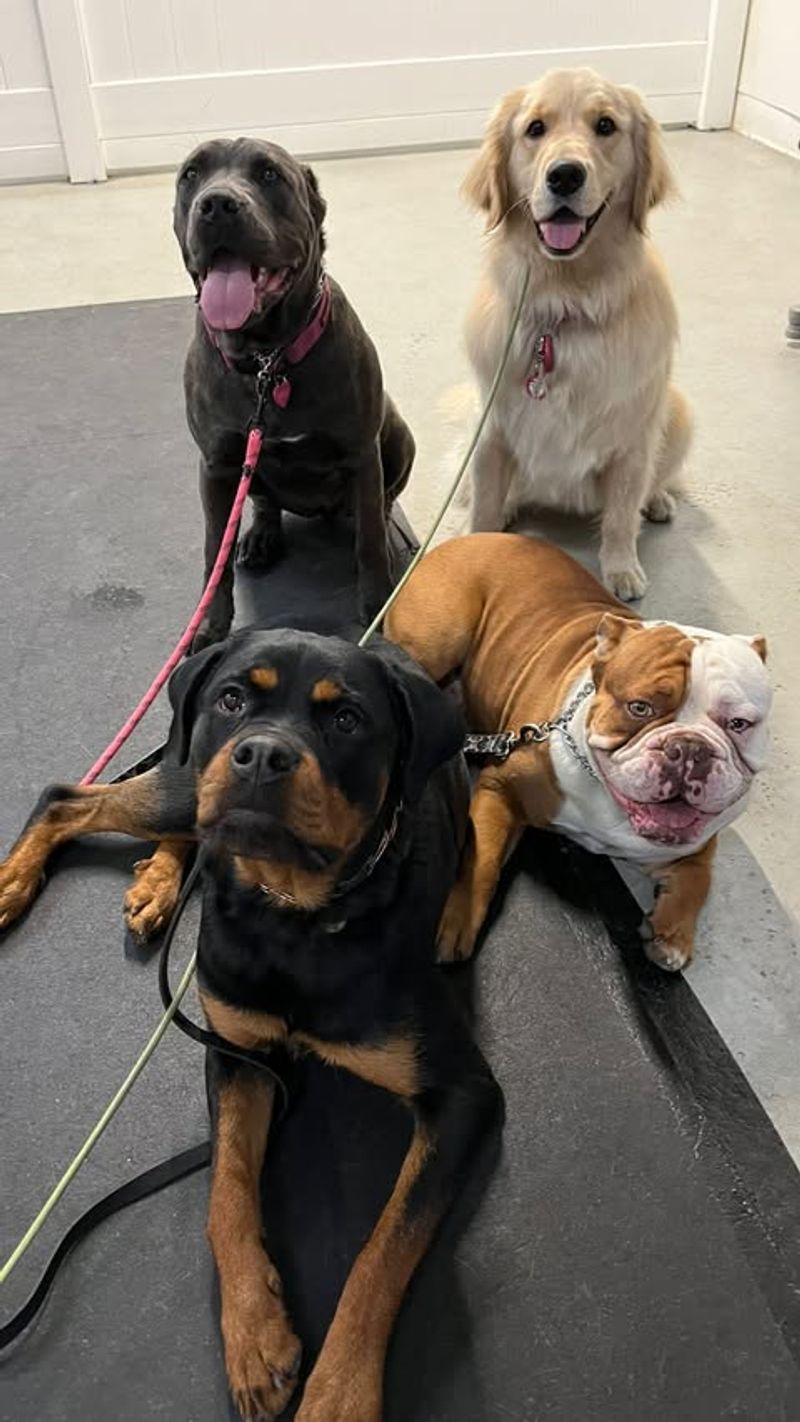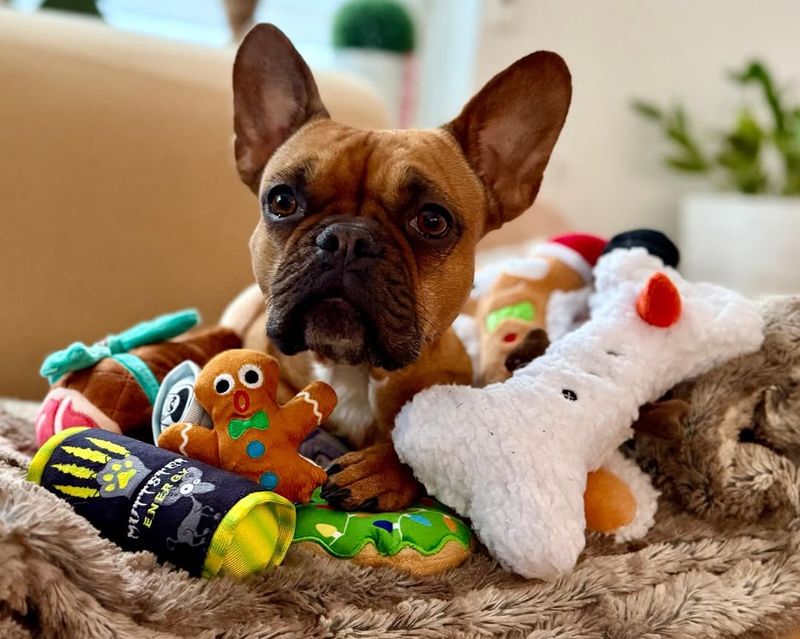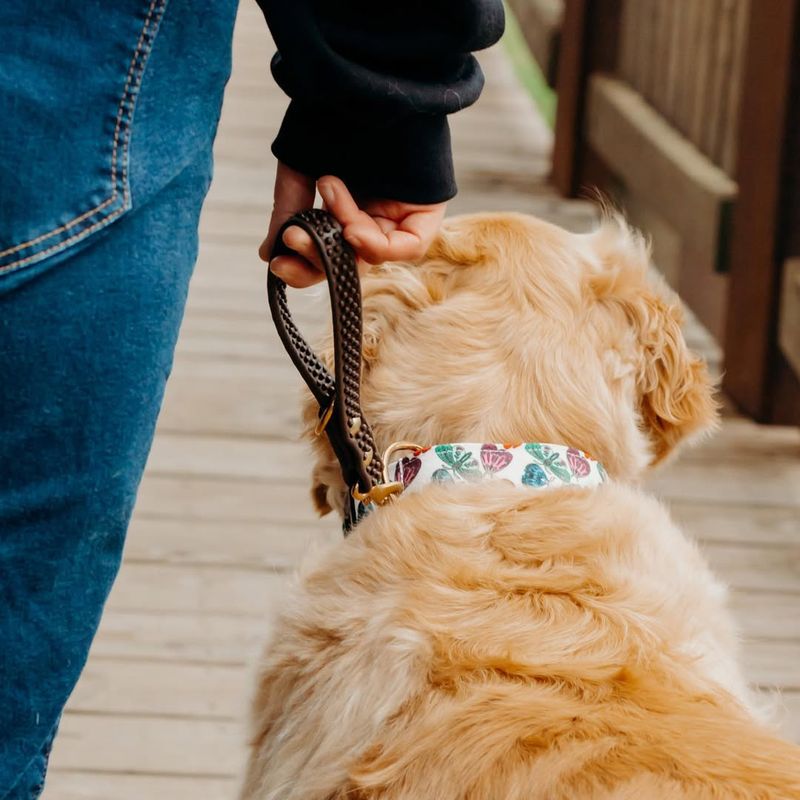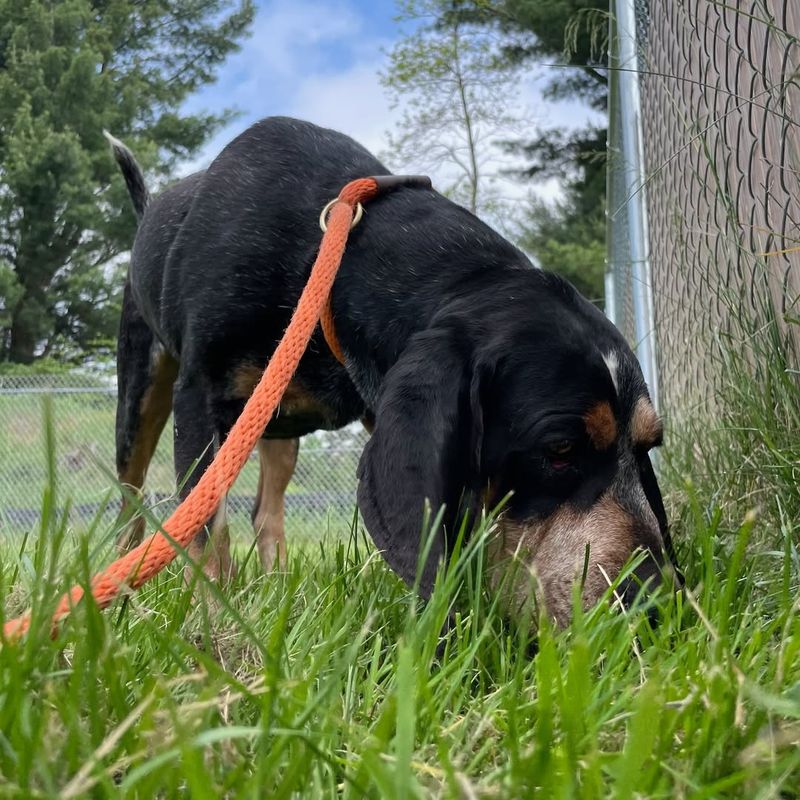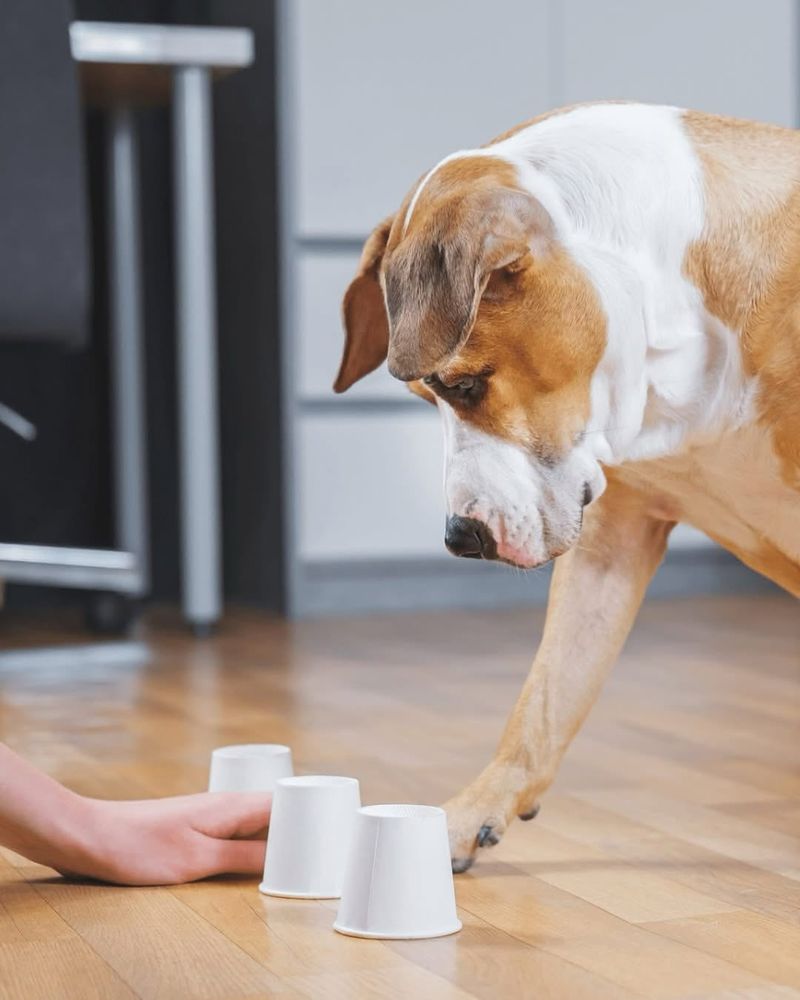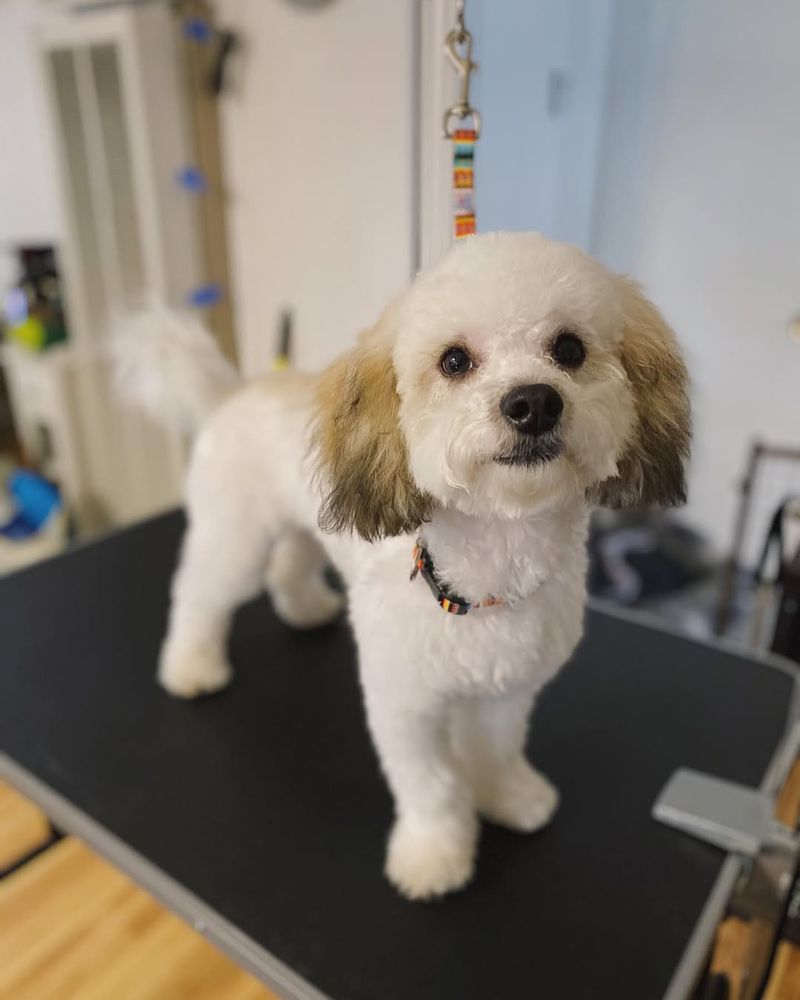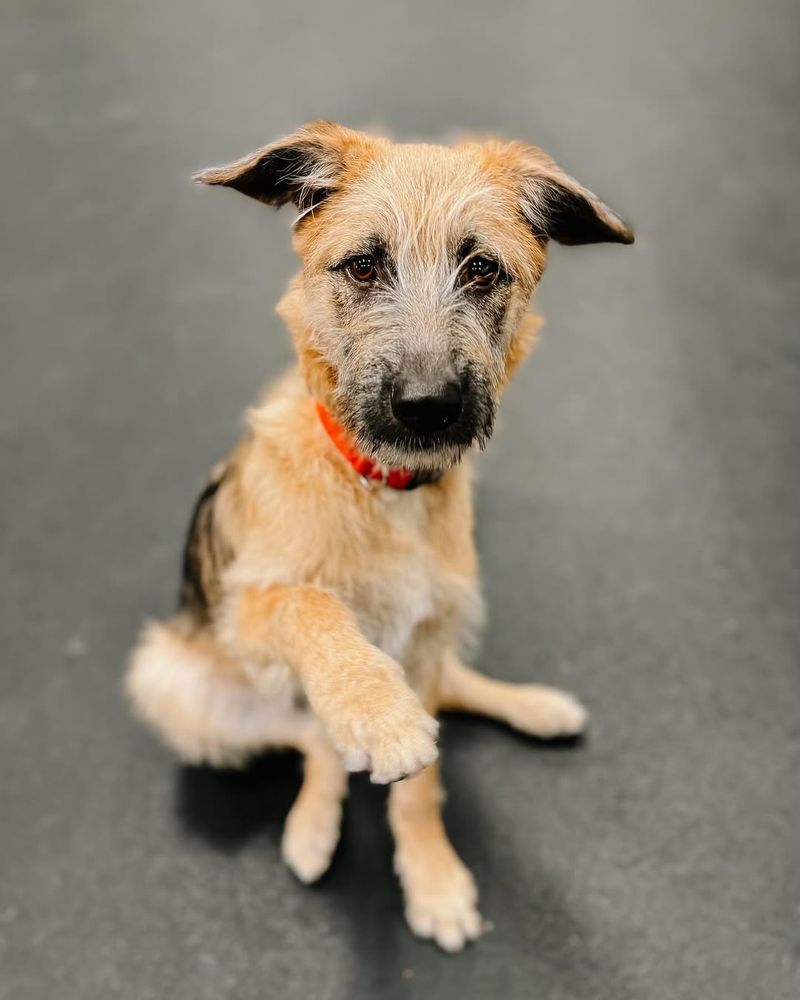Dogs are known for their unwavering loyalty and affection. However, there are certain human habits that can make them uncomfortable. Understanding these can help strengthen the bond between you and your furry friend. Here’s a look at 22 common human habits that dogs secretly dislike.
Hugging them tightly
While humans find comfort in hugs, dogs often feel trapped. Their instinctual nature perceives this as a restriction of movement, which can be unsettling. Dogs generally prefer a gentle pat or a scratch behind the ears. Observing their body language can offer insights into their comfort levels. A wagging tail doesn’t always equate to joy. Instead, look for relaxed ears and a softly wagging tail. To show affection, crouch down to their level and offer a gentle touch. Dogs appreciate space and understanding more than a bear-like embrace. So, next time, opt for a softer approach.
Staring directly into their eyes
For dogs, direct eye contact can be seen as a challenge or threat. In the wild, this behavior is often used to establish dominance. A better approach is to glance away periodically when interacting with your dog. This helps in building trust and prevents them from feeling threatened. Dogs rely more on body language than verbal communication. Offering a relaxed posture and soft gaze can make them feel more at ease. While some dogs might tolerate eye contact from familiar faces, it’s always crucial to read their cues and adjust accordingly. Respect their comfort zones.
Loud talking and yelling
Dogs have sensitive ears, and loud noises can be jarring for them. Yelling or speaking loudly can induce stress and anxiety in your furry friend. Instead of raising your voice, opt for a calm and soothing tone. This not only helps in effective communication but also ensures your dog feels safe. Remember, dogs can hear frequencies far beyond human capabilities. Your tone can convey a lot more than the words themselves. Create a serene environment by keeping your volume in check. A gentle voice can work wonders in building a bond of trust and affection.
Dressing them up
While it might be adorable to dress dogs in costumes, many of them find it uncomfortable. Dogs are naturally equipped to handle various weather conditions. Clothing can restrict their movement and cause overheating. If dressing your dog is essential, like in cold climates, ensure the attire is comfortable and breathable. Always observe their reaction and adjust as needed. Some dogs might tolerate outfits during special occasions, but it’s crucial to prioritize their comfort. Monitor for signs of distress, like excessive panting or struggling to move. Prioritize their comfort over aesthetics.
Bathing them too often
Over-bathing can strip dogs of their natural oils, leading to dry skin. While humans might enjoy frequent showers, dogs have different needs. Bathing them too often can cause more harm than good. Ideally, dogs should be bathed every few months. However, this varies depending on their breed and lifestyle. Using a gentle, dog-specific shampoo can help maintain their coat’s health. After a bath, ensure they are thoroughly dried to prevent any discomfort. Observing their behavior can guide you on the ideal bathing frequency. Keep their coat fresh without causing unnecessary stress or irritation.
Not providing enough exercise
Dogs thrive on physical activity. Lack of exercise can lead to pent-up energy, resulting in destructive behavior. Regular walks, playtime, and mental stimulation are crucial for their well-being. Find activities that match your dog’s energy level and breed characteristics. Some dogs enjoy long runs, while others prefer a leisurely stroll. Engage them with toys that challenge their minds. This not only keeps them physically fit but also mentally engaged. Ensuring they get adequate exercise can prevent anxiety and promote a happier, healthier life. A well-exercised dog is a content and relaxed companion.
Ignoring their personal space
Dogs, like humans, appreciate personal space. Crowding them can cause unease and stress. It’s essential to respect their boundaries and allow them to approach you when they’re ready. Pay attention to their body language; signs like yawning, licking lips, or turning away indicate they need space. Creating a comfortable environment where they can retreat is vital. Offering them a spot in the house that they can call their own helps build a sense of security. Remember, a happy dog is one that feels understood and respected. Give them room to retreat and relax.
Using strong fragrances
Dogs possess a highly sensitive sense of smell, much stronger than humans. Strong fragrances, like perfumes or cleaning products, can be overwhelming and unpleasant for them. It’s best to use scent-free or mild-scented products around your furry friend. Observe their reaction to new smells; if they sneeze or leave the room, it might be too strong for them. Keeping their environment as neutral as possible helps maintain their comfort. When introducing new scents, do so gradually. This allows them to adjust without feeling bombarded. A fresh, clean space is ideal for your dog’s well-being.
Sudden schedule changes
Dogs thrive on routine. Sudden changes in their schedule, like meal times or walks, can lead to confusion and anxiety. Consistency helps them feel secure and understand what to expect. If changes are unavoidable, introduce them gradually. This allows your dog to adjust without feeling stressed. Keeping a predictable routine for meals, playtime, and walks is essential for their emotional health. Adjust your schedule thoughtfully, ensuring your dog’s needs are met. A stable environment promotes a sense of safety and well-being. Your dog’s happiness often lies in the predictability of daily life.
Being left alone for long periods
Dogs are social creatures and often feel lonely when left alone for extended periods. This can lead to separation anxiety and behavioral issues. It’s crucial to ensure your dog has company, whether it’s another pet or a pet sitter. Providing toys and activities can help keep them engaged. Training them to be comfortable alone gradually can also ease their anxiety. Leaving a piece of clothing with your scent might offer comfort. Regular interaction and attention are vital for their emotional health. A happy dog is one that feels connected and cared for.
Walking them without letting them explore
Walking on a leash is not just exercise for dogs; it’s an opportunity to explore and engage their senses. Pulling them away from interesting scents or sights can be frustrating. Allowing them to sniff and investigate during walks enriches their experience. It’s essential to strike a balance between structured walks and giving them the freedom to explore safely. Understanding their need to investigate helps in building a stronger bond. Encourage exploration by offering them time during walks to satisfy their curiosity. This can lead to a more fulfilling and enjoyable outing for both.
Punishing them harshly
Harsh punishments can damage the bond between you and your dog. They thrive on positive reinforcement and gentle guidance. Instead of scolding or using negative tactics, reward good behavior with treats and praise. This encourages them to repeat desirable actions. Understanding their perspective and being patient is crucial. Focus on training methods that build trust and respect. Dogs respond better to kindness and consistency. Avoid fear-based approaches, as these can lead to anxiety and behavioral problems. Positive interactions foster a loving and cooperative relationship, nurturing a happy and well-adjusted companion.
Overstimulating with too much noise
A noisy environment can be overwhelming for dogs. Whether it’s multiple devices blaring or a bustling household, too much noise can induce stress. Creating a calm space where your dog can retreat is beneficial. Reducing background noise or providing a quiet area helps them feel at ease. Consider using calming music designed for dogs to soothe their nerves. Maintaining a serene atmosphere whenever possible ensures your dog’s comfort and well-being. Recognize signs of stress, like pacing or whining, and adjust the environment accordingly. A peaceful home nurtures a relaxed and content pet.
Teasing them for fun
What seems fun to humans can be confusing or upsetting for dogs. Teasing with toys, food, or affection can lead to frustration and trust issues. Dogs deserve respect and understanding in all interactions. Instead of teasing, engage in interactive play that fosters connection and joy. Recognizing their cues and responding appropriately helps in building a solid relationship. Games that involve cooperation rather than competition are more rewarding. Encouraging positive interactions over teasing ensures a respectful and loving bond. Building trust through kindness and fairness is key to a happy and harmonious relationship.
Not socializing them enough
Socialization is vital for a dog’s development and emotional health. Without it, they may become fearful or aggressive. Introducing them to varied environments, people, and animals from an early age helps build confidence. Social outings should be positive and gradual, ensuring they feel safe. Exposure to different experiences enriches their lives and reduces anxiety. Training classes or playdates can provide structured social opportunities. Encouragement and reassurance during social interactions boost their confidence. A well-socialized dog is often happier and more adaptable. Prioritize their social needs to foster a well-rounded and content companion.
Using gadgets around them excessively
Dogs seek interaction and attention from their human companions. Excessive gadget use can lead to feelings of neglect. Prioritize quality time with your dog by setting aside devices during walks or playtime. Engaging directly with them strengthens your bond and enhances their happiness. Balance screen time with activities that involve your pet. Recognizing their need for attention ensures a fulfilling relationship. Make moments count by actively participating in their play and training sessions. A mindful approach to technology fosters a deeper connection and a more rewarding companionship. Dogs thrive on genuine interaction and love.
Using a leash too short
A short leash can be restrictive for dogs, limiting their ability to explore during walks. Allowing them some freedom to roam within safe limits enriches their experience. Using a longer leash can provide a sense of autonomy while maintaining control. Dogs appreciate the opportunity to investigate their surroundings. Balancing guidance with exploration leads to more enjoyable walks. Consider the environment when choosing leash length, ensuring both safety and adventure. A flexible approach empowers your dog to satisfy their curiosity. A well-thought-out walk routine fosters a happy and content canine companion.
Not cleaning their food and water bowls
Cleanliness is crucial for a dog’s health. Dirty bowls can harbor bacteria and affect their appetite. Regular cleaning of food and water bowls ensures they remain hygienic and appealing. Use pet-safe cleaning products and rinse thoroughly to remove residues. Observing your dog’s eating and drinking habits can reveal preferences. A clean eating environment encourages healthy consumption. Ensuring freshness in their meals and water contributes to their overall well-being. Attention to cleanliness reflects care and respect for your pet. Prioritize sanitation to promote a healthy and happy lifestyle for your furry friend.
Restricting them from sniffing during walks
Sniffing is an essential part of a dog’s walk, providing mental stimulation and enjoyment. Restricting them from this natural behavior can lead to frustration. Allowing them to sniff freely within safe boundaries enriches their experience. Recognize that walks are more than physical exercise; they’re an opportunity to engage with the world. Providing time for exploration fosters a satisfying and balanced outing. Adjust your pace to accommodate their need to investigate. Encouraging this behavior nurtures a curious and content companion. Let them lead their journey with their nose, ensuring a fulfilling adventure.
Not providing mental stimulation
Mental stimulation is as important as physical exercise for dogs. Without it, they can become bored and destructive. Engaging them with puzzles, training, and interactive play keeps their minds sharp. Tailor activities to your dog’s breed and interests. Rotating toys and introducing new challenges prevents monotony. A stimulated dog is often happier and more well-behaved. Incorporating mental exercises into their routine enhances their quality of life. Invest time in activities that challenge and entertain them. A balanced approach to mental and physical stimulation fosters a joyful and thriving pet. Keep their minds engaged and active.
Not grooming them regularly
Regular grooming is vital for a dog’s health and comfort. Neglecting this can lead to skin issues and discomfort. Brushing not only keeps their coat clean but also provides an opportunity for bonding. Tailor grooming frequency to your dog’s breed and coat type. Regular checks for ticks, fleas, and skin irregularities promote overall wellness. Grooming can be a positive experience when approached with patience and care. Utilize tools and techniques suited to their needs. A well-groomed dog is a happy dog. Ensure grooming is a consistent part of their routine to enhance their quality of life.
Ignoring their body language
Understanding a dog’s body language is essential for effective communication. Ignoring signs of stress or discomfort can lead to misunderstandings. Paying attention to cues like tail position, ear movement, and facial expressions helps in assessing their emotions. Responding appropriately fosters trust and strengthens your bond. Recognizing when they need space or reassurance ensures a harmonious relationship. Educating yourself on canine signals enriches interactions and prevents conflicts. Acknowledging their non-verbal communication shows respect and care. Prioritize understanding their needs through observation and empathy, nurturing a well-balanced and happy companion. Communication is key.

